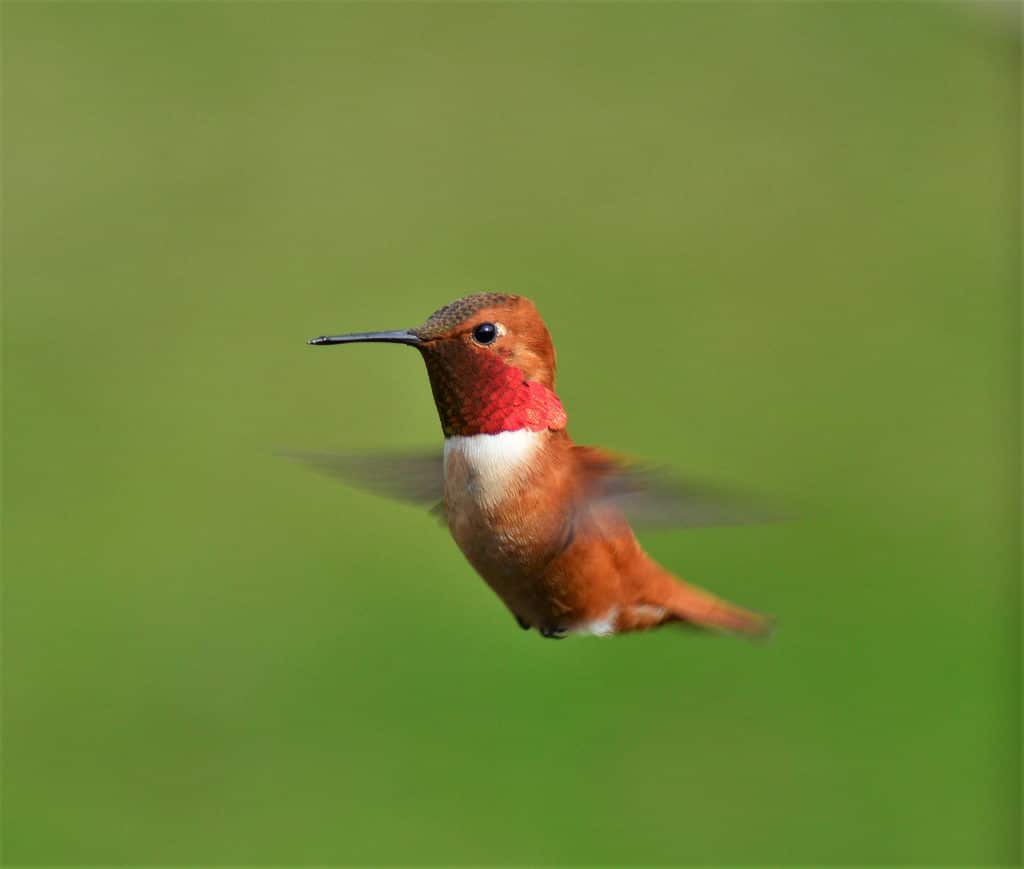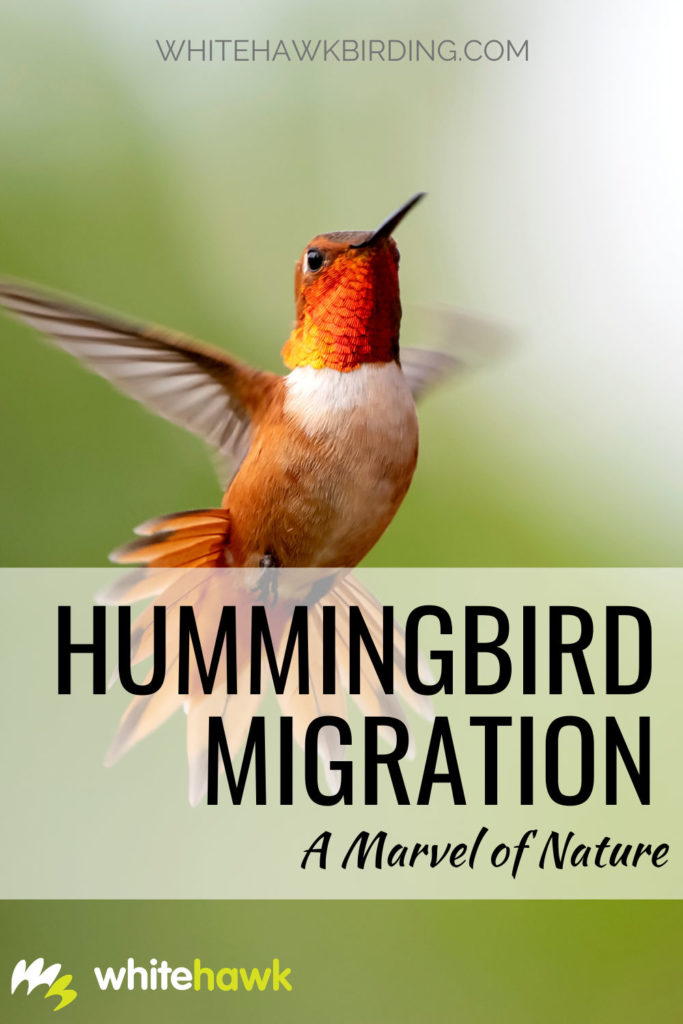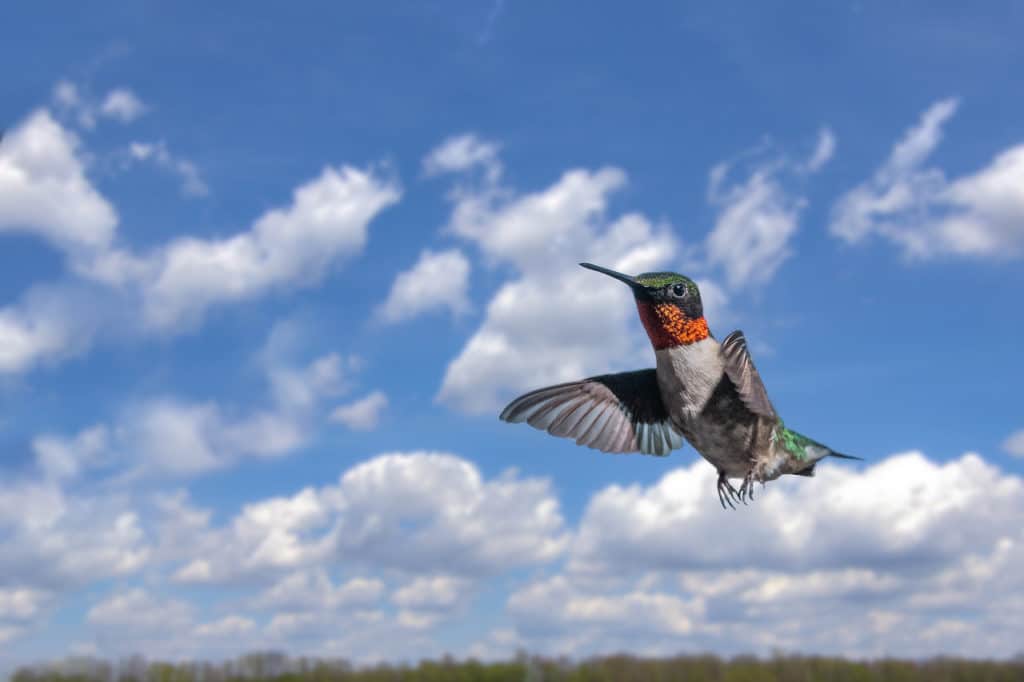
Hummingbirds are some of nature’s most amazing creatures. They are among the smallest birds in the world. Iridescent colors on their crowns, gorgets, and backs call our attention as they glitter in the sun. Furthermore, they have many fascinating adaptations and behaviors, even some that are seemingly impossible for such tiny birds. A majority of the 350 or so species of hummingbirds on Earth are found in the Neotropics. However, there are nearly 20 species that breed in North America, including the Rufous Hummingbird, which can be found as far north as Alaska. A majority of the hummingbird species in North America make an annual latitudinal migration. This happens in order to meet their feeding and environmental needs. Hummingbird migration is a very fascinating topic. These tiny birds make long-distance journeys south on tiny wings, battling weather, predators, and human-related threats.
In the Neotropics, hummingbirds are found at all elevations and in a wide variety of habitats. Many make their permanent home in tropical and subtropical forests and adjacent habitats. Increasing in elevation, hummingbirds thrive in highland cloud forests and open areas. Some, including the Andean Hillstar, Buffy Helmetcrest, and Rainbow-bearded Thornbill, occur on the highest peaks of the Andes, regularly over elevations of 4000 meters. Most species of hummingbirds in the Neotropics are residents, but there are some species that make altitudinal migrations within the tropics.
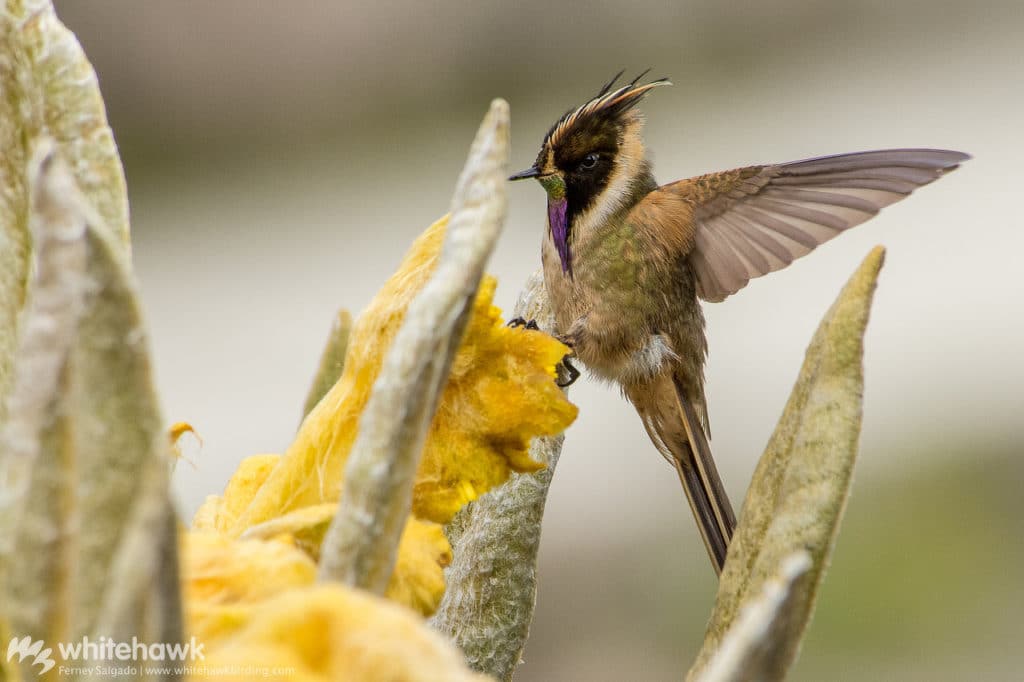
Which Hummingbirds Migrate and Where do they Migrate to?
The tiny Ruby-throated Hummingbird of eastern North America has the most studied and best-known migration of any hummingbird. It makes an annual migration from its breeding grounds in the eastern deciduous forests to the tropical habitats of Central America. What’s amazing, some individuals make a non-stop flight across the Gulf of Mexico and the Caribbean Sea – up to 24 hours straight in the air, a seemingly impossible feat!
The Rufous Hummingbird makes a slightly different migration. It spans a latitudinal gradient; however, it does not take the same route back. It migrates north from Mexico to Alaska along the coast. After breeding, it moves south following an interior route to take advantage of flowering mountain wildflowers along the way. Overall, a majority of the species of hummingbirds in North America migrate to warmer overwintering grounds where food is abundant.
Altitudinal migration in general is believed to be undertaken primarily by fruit-eating and nectar-eating species, of which the latter would include primarily hummingbirds. They are known to track and follow seasonal changes in their food availability. One of Central America’s largest hummingbirds, the Violet Sabrewing, is a known altitudinal migrant. It breeds at high elevations (1500 – 2400 m) and moving to lower elevations (as low as 400 m) after breeding. In Panama, Violet Sabrewings are most commonly seen in the western highlands of Chiriqui. Lesser-known on their migration, there are reports of this species in the lower foothills of El Cope, El Valle de Anton, and the Azuero Peninsula. The Berylline Hummingbird of Mexico is also known to migrate from higher to lower elevations.
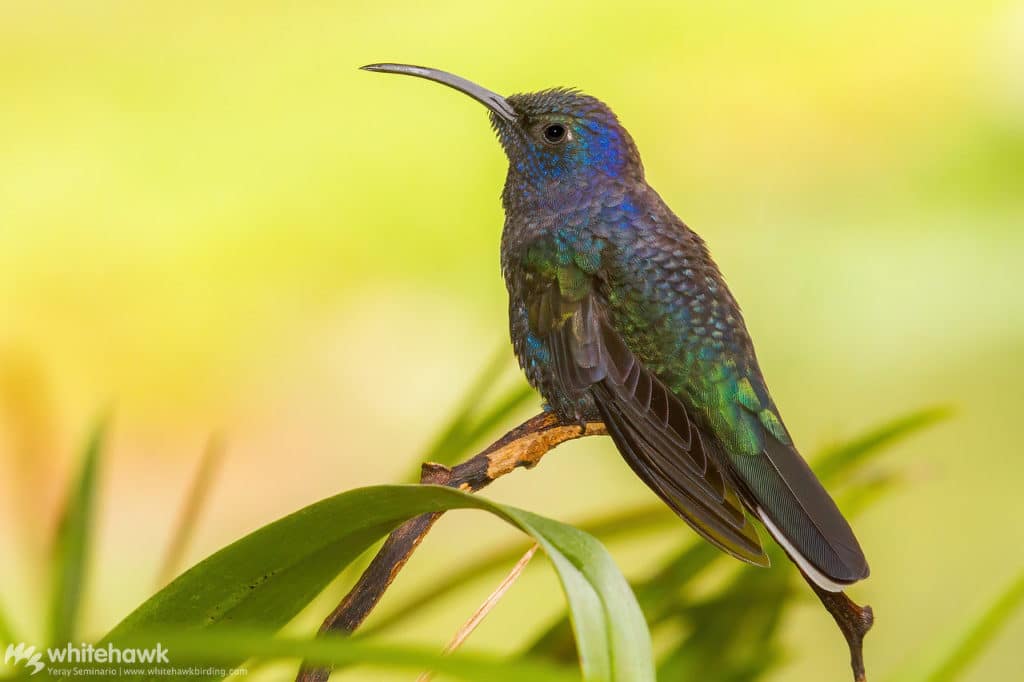
When do Hummingbirds Migrate?
Hummingbird migration correlates with the change of seasons in North America. As soon as temperatures in the north begin to drop, affecting plant and insect cycles, then hummingbirds prepare to migrate. They feed intensively for the weeks leading up to migration. They do this to build up fat stores on their body to assist them with the journey. In some cases, they often doubling their weight! Ruby-throated Hummingbirds leave Ontario, Canada, in September. They reach the southern United States in a matter of a week, then make the journey across the Caribbean. They arrive on their southern overwintering grounds in Central America in October and November.
Of course, these Neotropical migrants need to return to their northern breeding grounds every spring. Ruby-throated Hummingbirds say goodbye to their tropical companions and habitats in March and April and make a direct flight northward. They arrive on their breeding grounds as early as April. They need to time their arrival with the availability of food; if they arrive too early and a lingering winter storm comes through, this could be detrimental for early arrivers.
Altitudinal migrants tend to migrate after their breeding season finishes. While there likely isn’t as much obvious pressure to migrate as climate produces for the northern hummingbirds, fluctuations in dry and wet seasons in the Neotropics does cause changes in the periods of flowering plants and insect abundance. Generally, once done breeding in the highlands, they move to lower elevations to ride out the rainy season in a more obliging area.
Migration Timing – Who Migrates When?
Male hummingbirds often migrate before female hummingbirds. This allows the males to arrive earlier to establish territories on the breeding or wintering grounds. Adult hummingbirds tend to migrate earlier than juvenile hummingbirds. This is likely due to the fact that the young birds are inexperienced and need more time to prepare their fat stores and muscle mass before starting their journey.
How Far do Hummingbirds Migrate?
Ruby-throated Hummingbirds migrate from the Yucatan Peninsula and Central America to its breeding grounds in North America. They nest as far north as northern Ontario and central Alberta. Even more fascinating, the Ruby-throated Hummingbird makes a direct flight over the Gulf of Mexico, a distance of nearly 800 km (500 miles), non-stop! The Rufous Hummingbird, from its northern breeding grounds in Alaska, has the longest migration of any hummingbird. It overwinters in Mexico, a distance of 4800 km (3000 miles) from Alaska. Altitudinal migrants cover much shorter distances on their migration routes. It may be just a matter of a few hundred kilometers, if that.
Despite their tiny size, hummingbirds are physically able to carry out (and survive!) these long-distance journeys year after year. They have short, narrow wings that are ideal for direct, sustained flight. Hummingbirds are recorded at traveling up to 64 km/h (40 miles per hour) a day during migration.
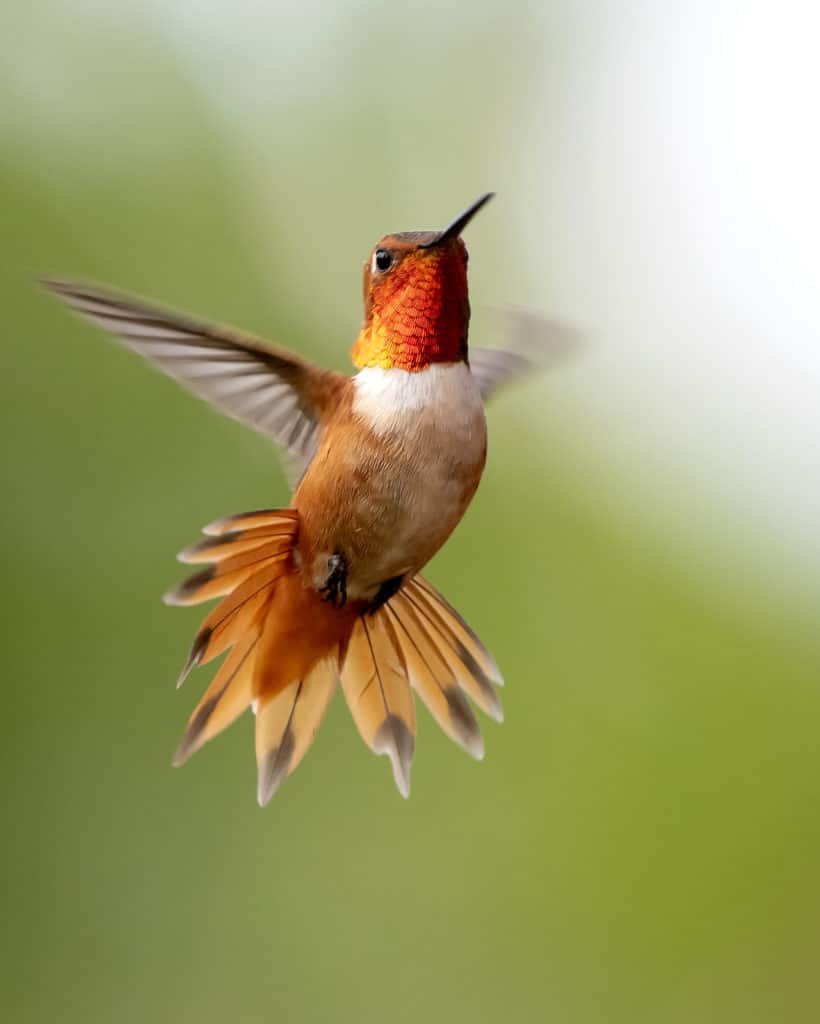
Why do Hummingbirds Migrate?
Hummingbirds migrate for a number of reasons. The first and most obvious is to follow food resources. Since hummingbirds depend heavily on nectar as a food source, they rely very much on the blooming cycles of plants. Hummingbirds also eat a lot of insects, especially during the breeding season. Another factor that affects their food resource is climate. North American hummingbirds are “forced” to migrate as seasons change, reducing food availability. As autumn advances in the north, plants enter into their overwintering stage and no longer produce flowers, and insects settle in their dormant winter stages. While many hummingbirds have means of dealing with cooler temperatures, with no food available, they need to migrate south.
Other factors that can affect hummingbird migration include predation, competition for resources with other animals, and endogenous programming.
Watch for Hummingbird Migration where you live
If you live in an area where you are on a migratory route for birds, then chances are you may be able to see hummingbird migration happening in your own backyard or nearby. There are ways to assist hummingbirds on their migration. Planting flowers attractive to hummingbirds, especially those that bloom early or late in the season, can help hummers keep themselves fueled as they pass through your area. If you put out hummingbird feeders, it is a good idea to keep them out a little longer even after you stop seeing the birds, just in case there are any late individuals passing through. Likewise, get your feeders ready and available to the birds in early spring, so that early migrants have a food source when they arrive. Remember to clean your feeders and replace your hummingbird nectar regularly to avoid spoiling.
~ The Whitehawk Team
